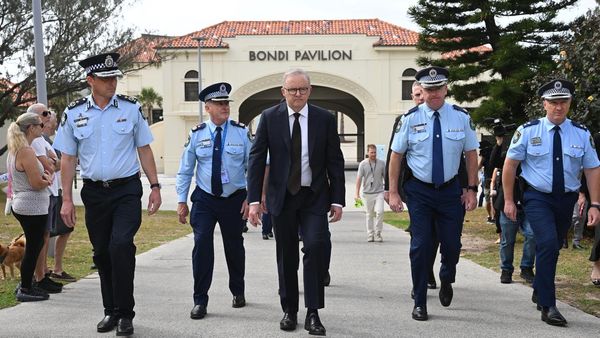The Tasmanian government announced last week a multi-billion-dollar wind farm plan would be the second to be declared a major project under its legislation, streamlining the planning and approvals process.
The North East Wind project includes up to 210 turbines with a combined capacity of 1260 megawatts, making it one of the largest renewable energy developments in the state.
But with several wind farms proposed across the state, what is the exact proposal for this one, and what do landowners think of having turbines in their backyard?
What is the plan and who is behind it?
The $2.7 billion project has been proposed by ACEN Australia for two sites in the far north-east: Waterhouse and Rushy Lagoon.
Rushy Lagoon is Tasmania's largest farm and is owned by New Zealand millionaire Alan Pye.
The property, which is home to multiple dairies, beef cattle, and sheep, was put on the market in 2018 for $70 million but did not sell.
ACEN Australia is a multinational company headquartered in The Philippines with offices in Vietnam, Indonesia, India and Australia.
It also recently bought out Australian energy company UPC/AC Renewables.
If that rings a bell, it's because UPC is behind the controversial planned wind farm for Robbins Island in Tasmania's north-west, which has earned the ire of some locals with environmental and amenity concerns.
ACEN Australia chief operating officer David Pollington said the company has done a layout to determine the maximum turbine count, but that could change.
"Over the years this project will take, technology moves on, so as a consequence the turbines tend to get a little larger but we tend to use less of them," he said.
"The impact then reduces because you have less hardstands, less roads linking them so then it can also reduce other things, like native vegetation clearance," he said.
Tasmania's north-east corner already has a reputation for being an ideal wind farm location, with the Musselroe Bay Wind Farm at Cape Portland opening in 2014.
"It's particularly good for Tasmania because if you have low wind in the north-west, it can still be windy in the north-east and vice versa, they don't go up and down together, so you end up with a much more diverse supply of energy."
What does it mean for locals?
While it is very early days for the project, it has not yet generated the same amount of community discussion or media attention as similar plans in other parts of Tasmania.
ACEN Australia put a wind monitoring tower on one of farmer Stephen Creese's properties at Waterhouse three years ago.
"There are about five or six landowners in the area and they approached us individually to see what the level of interest was to maybe one day building a wind farm," he said.
"I gave it quite a bit of thought and personally I'm quite in favour of any type of renewable, whether it's wind, solar or wave."
Mr Creese said the landowners have set strict conditions about where turbines could go to make sure they would not be too close to grazing livestock and irrigation operations.
He and the other landowners have all signed an agreement with ACEN to lease portions of the land if the project is approved, but he does not yet know how many turbines would be on his property.
Provided those conditions are met, however, he said it's a welcome development for a municipality that doesn't attract many large-scale projects.
"Dorset has missed out on a lot of this sort of stuff. We don't really have many big projects, so it's great for the contractors and trades."
"It's got a far wider community gain."
Mr Pollington said the project would create about 400 local jobs in the construction phase and 65 ongoing roles.
He also said community feedback would shape the placement and final number of turbines, as well as where a transmission line to export the energy generated at the farm could go.
By being declared a major project, the state government is the planning authority instead of the council.
That has been welcomed by Dorset Mayor Greg Howard, who said the council was not equipped to consider such a large project.
So when will turbines go up?
No time soon, Mr Pollington said.
He said it would take a minimum of three years to do all the work to prepare a development application, which would then have to be approved before construction could begin.
"We'll undertake all the necessary environmental, heritage, Aboriginal heritage and infrastructure studies to prepare an environmental impact statement for assessment."
"It'll take a least three years, but probably closer to five."







